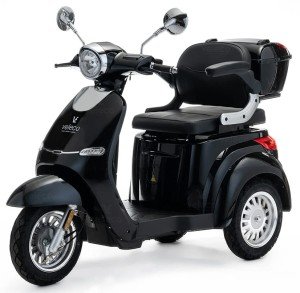Guide To Velco: The Intermediate Guide For Velco
페이지 정보

본문
Velcro: A Revolutionary Fastening Solution
Introduction
Velcro, a name that has almost become associated with hook-and-loop fasteners, has transformed the way we consider attaching materials. Often a staple in various markets and households, Velcro offers an easy yet efficient service to protect things without the need for buckles, buttons, or zippers. This short article looks into the origins, systems, applications, and benefits of Velcro in addition to resolving some regularly asked questions.
The Origins of Velcro
Velcro was developed in the late 1940s by Swiss engineer George de Mestral. After a searching journey in the Alps, Mestral became fascinated by the burrs that stuck to his pet dog's fur. Upon closer examination, he understood they functioned through a system of tiny hooks that ensnared anything with a loop, including fabric and fur. Acknowledging the potential of this natural attachment system, Mestral embarked on a journey to recreate it in a synthetic kind. By 1955, he had actually patented his creation, branding it "Velcro," a combination of the French words "velours" (velvet) and "crochet" (hook).

How Velcro Works
Velcro consists of 2 different pieces: a hook side and a loop side. These 2 parts interlock when compressed, creating a strong bond that can be quickly released with a simple pull. The functioning of Velcro can be broken down into these primary elements:
| Component | Description |
|---|---|
| Hook Side | This side includes tiny hooks that catch and keep loops. |
| Loop Side | This side includes soft loops developed to accept hooks when called. |
Mechanism of Fastening
- Interlocking: The hooks on one side catch the loops on the other, developing a physical interlock.
- Strength: The variety of hooks and loops guarantees a considerable holding strength, making it appropriate for both light and sturdy applications.
- Reduce of Use: Velcro can be disengaged and re-engaged numerous times without losing its efficiency, setting it apart from more conventional attachment techniques.
Applications of Velcro
Velcro has discovered application across a myriad of sectors, including:
Fashion Industry
- Sportswear
- Shoes (specifically kids's footwear)
- Accessories (belts, bags)
Medical Field
- Orthopedic gadgets
- Bandages
- Prosthetics
Automotive and Aerospace
- Seat covers
- Interior linings
- Security equipment
Family Items
- Drapes
- Carpets
- Organizers
Industrial Use
- Cabling
- Equipment securing
- Tools storage
Advantages of Velcro
The popularity of Velcro can be attributed to a number of advantages it uses over standard securing methods:
- Quick and Easy to Use: No tools are needed, making it easy to use.
- Flexible: Works on various surfaces and materials.
- Adjustable: Allows for easy modification in size (e.g., straps).
- Resilient: Holds up under recurring usage.
- Washable: Maintains its function even after cleaning.
Potential Drawbacks
While Velcro is beneficial in many contexts, there are some limitations to be knowledgeable about:
- Noise: The noise of Velcro being pulled apart can be loud in peaceful settings.
- Use and Tear: Over time, extreme usage may lead to fraying or decreased efficiency.
- Limitations with Heavy Loads: While it can hold significant weight, it might not appropriate for extremely heavy products.
Frequently asked questions about Velcro
1. Is Velcro water resistant?
Yes, Velco Velcro can be made from water resistant products, making it appropriate for outdoor and marine applications.
2. Can Velcro be recycled?
Absolutely! Velcro is designed for repeated usage, and numerous items can be resealed and opened multiple times.
3. How do you clean Velcro?
Cleaning Velcro is basic. You can utilize a lint roller or a soft brush to remove particles. For persistent dirt, it may be washed carefully with water.
4. Is Velcro strong enough to replace zippers?
In numerous applications, yes, Velcro can efficiently replace zippers, especially in instances where quick fastening and loosening are needed.
5. Exist different types of Velcro?
Yes, there are lots of types, including varying widths, colors, adhesive strengths, and materials created for different applications (i.e., high-temperature, outdoor, and so on).
Velcro has proven to be a versatile and innovative fastening service that has actually penetrated numerous sectors, improving both everyday life and commercial applications. Its capability to offer a dependable and user friendly approach of fastening makes it a long-lasting component of contemporary design. From casual garments to advanced medical applications, Velcro continues to uphold its reputation as a staple fastening method for numerous uses. Whether it's for the fashion lover or an expert in the medical field, Velcro stays an unsung hero in the world of attaching technology.
By reinventing how we connect and secure items, Velcro is a testament to the power of ingenious thinking and simpleness in style. As innovation progresses, we can just anticipate even more imaginative applications for this exceptional creation in the future.
- 이전글Are You Able To Research Driver's License Online Online 25.06.21
- 다음글12 Statistics About Buy Driver's License Online To Inspire You To Look More Discerning Around The Water Cooler 25.06.21
댓글목록
등록된 댓글이 없습니다.